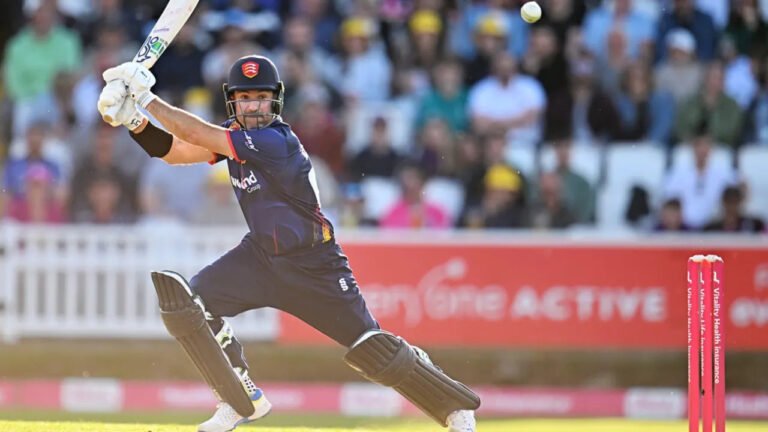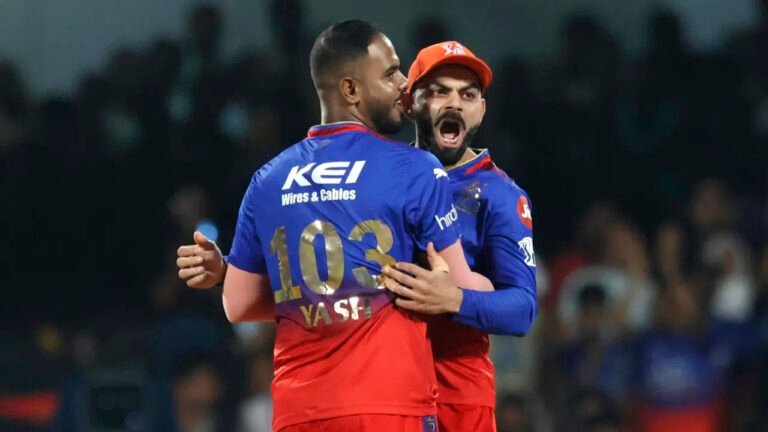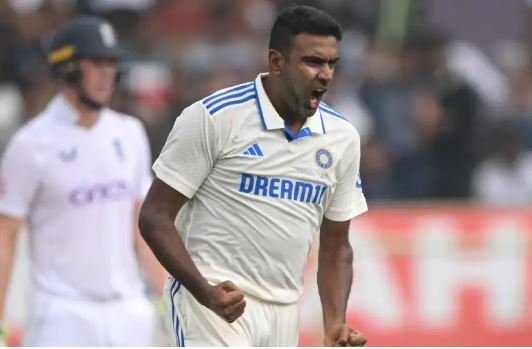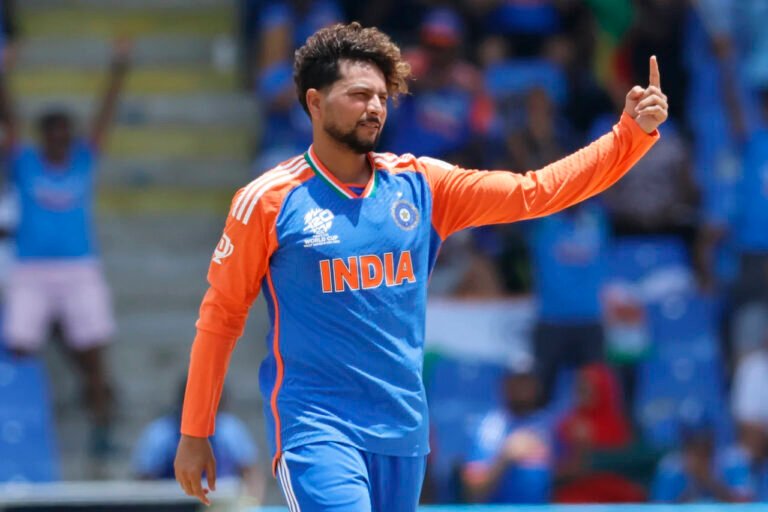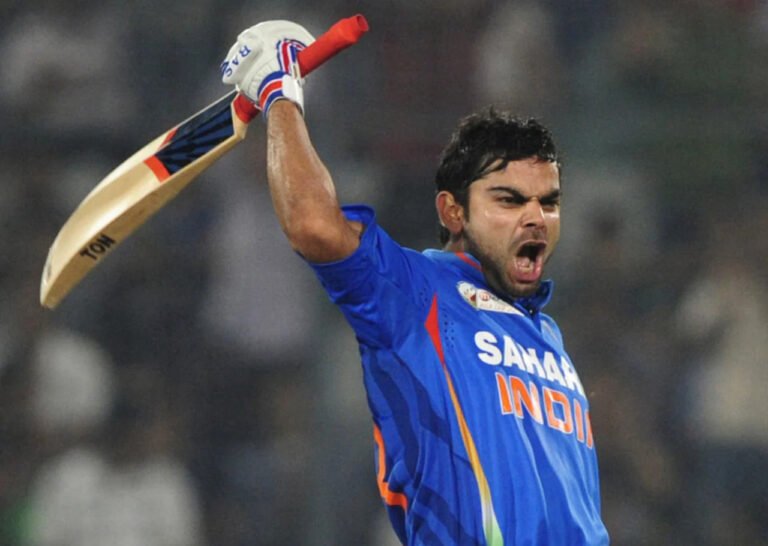Sehwag’s Record-Breaking 219 Secures Victory for India Against West Indies
Virender Sehwag’s unparalleled performance propelled India to a resounding victory against West Indies, clinching the series with a record-breaking score of 219 runs.
India achieved their best ODI total of 418 for 5 thanks to Virender Sehwag’s incredible effort, which also ensured victory in the five-match series against the West Indies.
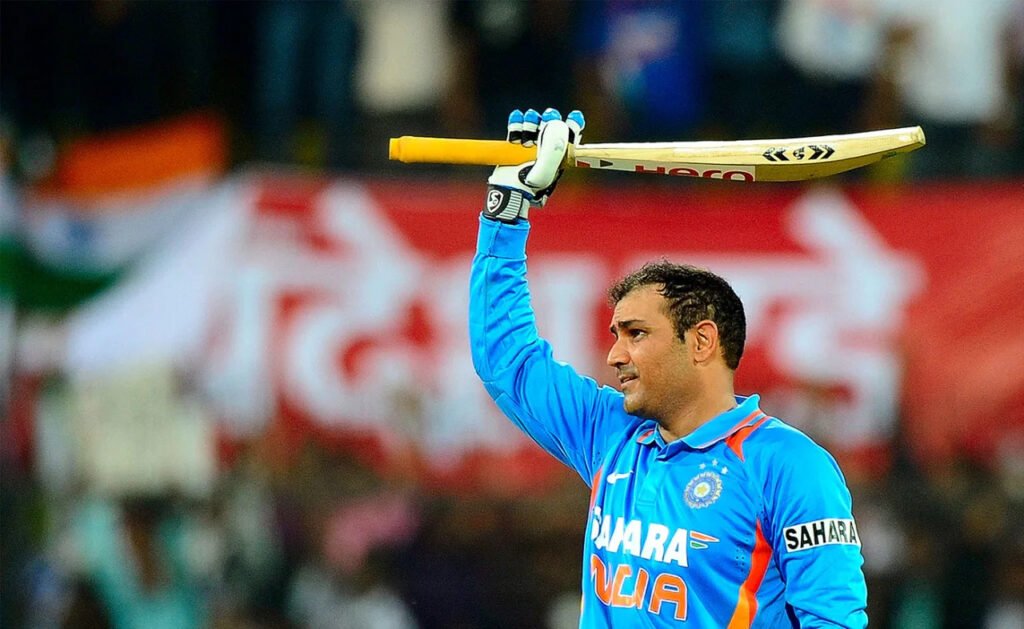
India defeated West Indies 265 (Ramdin 96, Jadeja 3-34, Rahul Sharma 3-43) by 153 runs with 418 for 5 (Sehwag 219, Gambhir 67, Raina 55).
In one-day international cricket, it took almost forty years for a batsman to record their first double-century, but it took less than two years for them to score their second. The batsman most expected to surpass Sachin Tendulkar’s record for the best individual ODI score, Virender Sehwag, did more than just break it; rather, he destroyed it and set a standard so high that it’s difficult to fathom anybody else surpassing it.
In Indore, Sehwag was racing towards 200, not out of time like Tendulkar was in Gwalior. When he was removed in the 47th over, he had made 219 off 149 balls after arriving in the 44th over. Additionally, in one of cricket’s most bizarre coincidences, both ODI double century were achieved at locations less than 500 kilometers apart in the Indian state of Madhya Pradesh.
India achieved their best ODI total of 418 for 5 thanks to Sehwag’s effort, which also guaranteed India’s victory in the five-match West Indies series. It was a typical innings for Sehwag’s style of batting. He just kept hitting the ball after hitting his second one for four. He also took a lot of risks, eluding two opportunities to be run out and two dropped catches, but he persevered and made sure that after the fifteenth over, India’s run rate remained above seven.
The only time Sehwag did something unexpected was when he dove to avoid being run out in the 20th over. Sehwag never jumps off anything. It demonstrated his resolve to stick with the plan. After reaching 50 off 41 balls, 100 off 69 balls, 150 off 112, and 200 off 140, he reached his target. With a blistering cut that raced to the backward-point limit, he shattered the record, giving a forceful fist pump before grinning.
Prior to this match as well as the three that followed, Sehwag had acknowledged that India’s struggles in their chases were primarily due to the top-order mishaps, to which he contributed. Sehwag led by example today despite making a duck in the previous match in Ahmedabad, which India lost.
India conducted two things at the Holkar Cricket Stadium in a distinct way. For the first time in the series, they opted to bat first, and Sehwag and Gautam Gambhir, who are their strongest combination, started, pushing Parthiv Patel down the order. The result of such choices was an opening partnership of 176 that progressed at a steady pace, gained momentum, and felt like a runaway train until, eventually, a run-out brought it to an inevitable end.
The first boundary in the second over, when Sehwag flicked Ravi Rampaul’s first delivery for four, was enthusiastically applauded by the large audience, which carried on the pattern of rising attendances during the home ODIs. Sehwag would go on to welcome several more West Indian bowlers with similar gestures. Sehwag appeared risky right away. Gambhir didn’t. Gambhir, who had made just three runs in fifteen balls, eventually got the necessary width and edged Kemar Roach to the boundary of the point.
On 20, though, both batsmen could have been out. Though Kieron Pollard missed the stumps from point, and Andre Russell dropped Gambhir on his follow through, Sehwag had given up trying to establish himself. Gambhir started to direct, cut, and drive through the off side more often, placing himself wide of the boundary riders and over the heads of fielders. This area was the scene of seven of his first nine fours. India scored 63 for 0 to end the required Powerplay.
Also Read: Reliving the 2011 Cricket World Cup Final: India’s Triumph Led by Dhoni and Gambhir
After then, the field expanded, but it made little difference. In overs 11 and 15, Sehwag and Gambhir combined for 45 runs scored. Sehwag started this stretch by lifting the opening ball over the long-on boundary, offspinner Sunil Narine. Then, over more cover, he fired Darren Sammy’s first inside out. Sehwag hit Narine once more as this period came to a finish, this time into the stands past deep midwicket.
As soon as the field was brought in for the bowling Powerplay, Gambhir reached his half-century off of 51 balls by cutting Roach past point and then dabbing for another single. The pairing was characterized by the smash-and-dab combo. With a vicious cut and a swing in the air, Sehwag reached his hundred runs and, at one point, just missed the jumping fielder’s fingertips before tearing to the boundary.
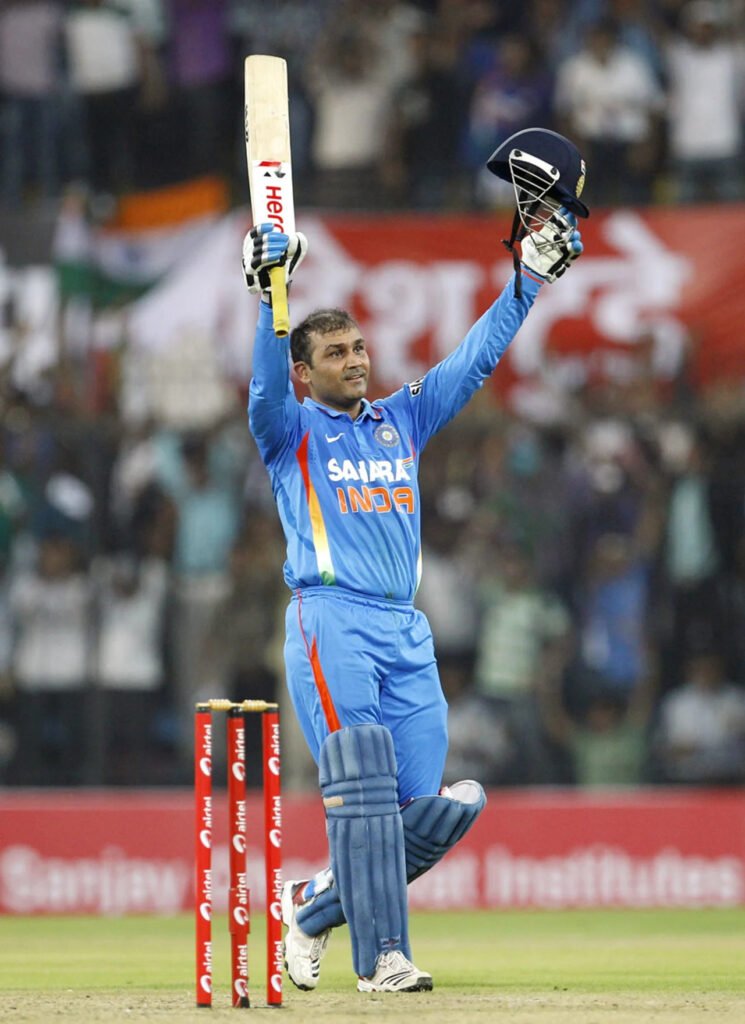
Sehwag ran Gambhir out on the next ball after Samuels struck him straight. Sehwag was visibly furious with himself, but he kept punishing the West Indies.
Sehwag liked to go square of the wicket when he was scoring fours, flicking and peering at the many deliveries he was getting on the pads and opening his face to pepper the backward-point boundary. He frequently went straighter for six, aiming for the arc between far on and midwicket. He finished with 25 fours and 7 sixes. When Sehwag spooned Rampaul towards cover in the 38th over of 170, Sammy dropped a dolly, upsetting the bowler.
The boundaries and landmarks were hazy for the remainder of the inning. With 42 balls, Suresh Raina reached his half-century. India took 39.1 overs to reach 300. With a flip to the square-leg boundary, Sehwag surpassed his World Cup record of 175 against Bangladesh. With a chip over the fielder at short fine leg, he exceeded 8000 ODI runs. After making that shot, he went from 191 to 195, and he was soon cutting Russell to send India into a state of bliss. After Sehwag was removed from the game by lofting Pollard to Anthony Martin, the replacement, at a long range, the majority of the West Indian fielders approached him to shake hands.
The one negative aspect of Sehwag’s performance was that he did not field. Instead, he watched from the dressing room as the top-order batsmen for the West Indies crashed and burned under barrage of blows. In his first three overs in international cricket, India’s rookie legspinner Rahul Sharma struck with the final ball of each over, removing Marlon Samuels, Danza Hyatt, and Pollard to leave the West Indies reeling at 100 for 5.
Rahul bowled a range of deliveries; he has been a member of India’s squads since the domestic ODI series against England, although he remained on the bench. Though he executed legbreaks, googlies, and topspinners at different speeds, his success came from the faster one.
Samuels bottom-edged a quick topspinner onto his stumps, despite his best efforts to cut it. Then Hyatt came out of the crease, only to be yorked by a quick legbreak. To bowl the batsman, the ball pitched outside leg stump and twirled between his pads. The next to go was Pollard, who missed a topspinner that clipped off stump while swinging over the line.
West Indies completed the match in a very different way from how it started: tamely. This was because they chose to bat out time rather than play shots after losing more wickets. But Denesh Ramdin scored 96, which was both his best and the most in ODI history for a West Indies wicketkeeper. His 64-run partnership with Sunil Narine, ranked No. 11, was enough to keep India in the game for longer than they would have preferred.


